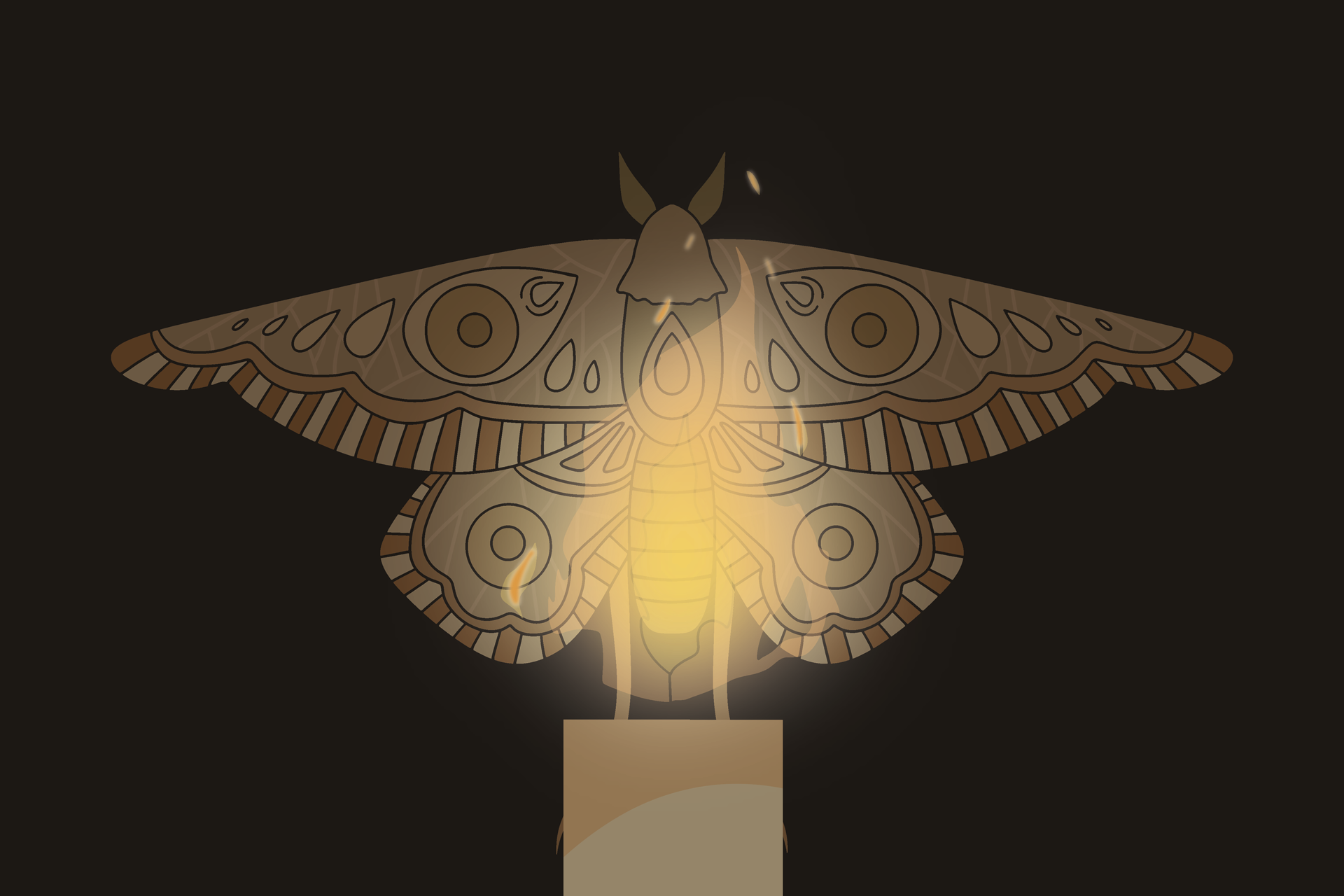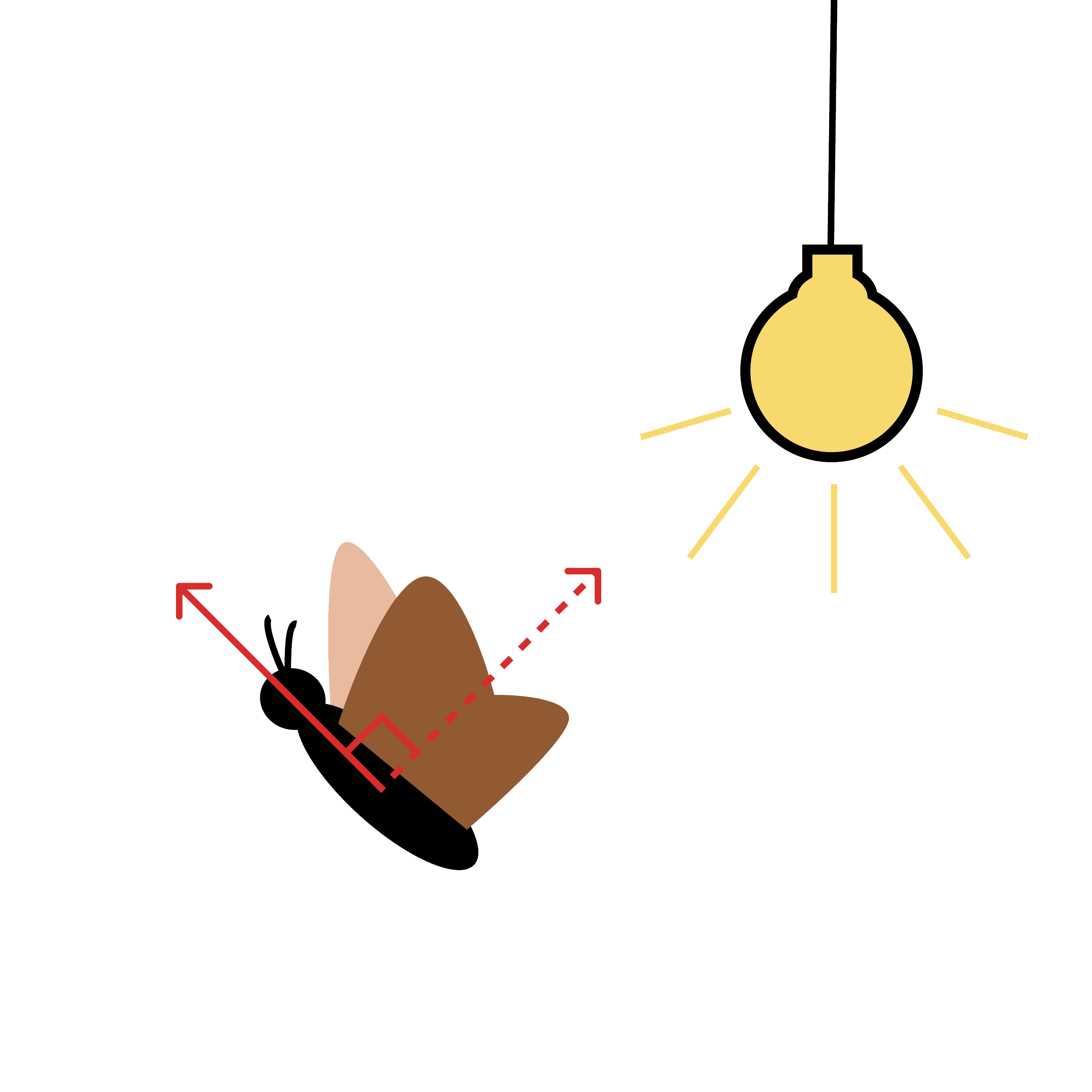A New Explanation of “Like a Moth to a Flame”
By Helen Wong 王思齊

If you ever lit a candle in the wilderness during nighttime, you would likely find moths (and other nocturnal insects) irresistibly drawn to the candle flame. This phenomenon is so common that there’s a phrase for it, “like a moth to a flame.”
For centuries, scientists wondered what attracts insects to flames [1]. Some believe insects mistake flame light for an indicator of gaps between leaves, or a celestial compass like the moon. Others propose that the heat of the light draws them in, or that the intense light blinds them, causing erratic flight patterns.
To answer this age-old question, researchers at Imperial College London recorded and analyzed high-resolution flight trajectories of insects under artificial lights. Surprisingly, their findings point to a new explanation: the dorsal light response (DLR) [1–3], a highly conserved behavior that keeps the dorsal side, or the back, of insects facing the brightest visual region.
Flying insects need to stay upright to maintain correct flight orientation. Throughout the long history of insect flight evolution, the sky has consistently been the brightest region in the visual field, making it a reliable cue for determining which way is up. Thus, by leveraging DLR, flying insects can adjust their flight orientation with reference to the sky. This capability is especially critical for small insects flying with a relatively low inertia because the gravitational force they experience can often be masked by other forces exerted by wind or turbulence, so unlike humans and plants, gravity cannot be used as a reliable cue of direction.
Let’s take a closer look at how the researchers arrived at this unexpected conclusion of DLR.
The first clues for DLR emerged from initial field experiments in Costa Rica, where the team used infrared high-speed cameras (Footnote 1–2) to record insect flight under various lighting configurations. Upon analyzing the recordings, researchers observed three unusual behaviors that are common in conditions with light but not in complete darkness (Figure 1). When the insects are at the same horizontal level as the light source, they orbit around it. If the insects are above the light source, they inverse, or flip upside down, and crash onto the ground. While below the light source, the insects fly upward and then stall, or slow down. Most importantly, in all three scenarios, the insects tilted their backs toward the light source.
.png) |
.png) |
.png) |
Figure 1 Insect flight trajectories demonstrating the three unusual behaviors observed during field experiments: orbiting (left), inverting (middle), and stalling (right).
Combining all lines of evidence, the most plausible explanation is that the insects are trying to align their backs to the light source under the influence of DLR. Nonetheless, these are just qualitative observations — can we possibly quantify this “dorsal tilting toward light” behavior?
An intuitive approach is to track the insects’ flight paths and measure their body orientation as they fly. Back in the lab, the researchers conducted similar flight experiments, this time attaching position markers to several species of interest: Common Darter and Migrant Hawker dragonflies, as well as Yellow Underwing Moths and Lorquin’s Atlas Moth. They then projected the velocity vectors of the insects onto the ground and compared them to the instantaneous direction of light. Results showed that the insects mostly moved at right angles to the direction of the light source (Figure 2) – a piece of strong evidence that the insects are not attracted to the light, but are instead caught in loops around it as they aligned their backs to it due to DLR. The team demonstrated, through simulated flight experiments, that DLR alone is sufficient to produce the observed behavior in both field and lab settings.
 |
Figure 2 When insects tilt their backs toward the light source under DLR, their flight direction (solid arrow) will form a right angle to the direction of the light source (dashed arrow).
The significance of this study goes beyond merely answering a longstanding question; it also carries important implications for our use of artificial light. As human civilization progresses, we increasingly rely on artificial lighting at night for convenience, often not realizing that these lights could confuse insects. While many artificial light sources, like streetlamps, are essential, we can still make changes to help. By simply getting rid of unnecessary upward-facing lights that disorient insects and cause them to crash onto the ground (recall the inversion behavior!), we can seek a more harmonious coexistence with nature.
1 Insect movements were captured using infrared illumination, as infrared light is assumed to be invisible to insects in this study [1]. This ensures their behavior remains unaffected during the flight experiments. In fact, none of the insects crashed into or interacted with the infrared lights set for videography purposes, which indirectly rejected the hypothesis that the heat of the light intervenes the flight of insects.
2 Videos in our daily life are filmed at 24, 25 or 30 frames per second (fps), while slow-motion videos are captured at 50 or 60 fps. In this study, they shot at an incredibly high frame rate of 500 fps.
References
[1] Fabian, S. T., Sondhi, Y., Allen, P. E., Theobald, J. C., & Lin, H. T. (2024). Why flying insects gather at artificial light. Nature Communications, 15(1), 689. https://doi.org/10.1038/s41467-024-44785-3
[2] nature video. (2024, January 31). ‘Like a moth to a flame’ - this strange insect behaviour is finally explained [Video]. YouTube. https://www.youtube.com/watch?v=i7awa_WGI_o
[3] Ravate, B. (2024, February 2). Flying insects become disorientated and trapped by artificial light. Imperial News. https://www.imperial.ac.uk/news/251217/flying-insects-become-disorientated-trapped-artificial/